Today is Australia’s annual observance of the Lambing Flat Uprising by Diggers against invading Chinese back in 1861.
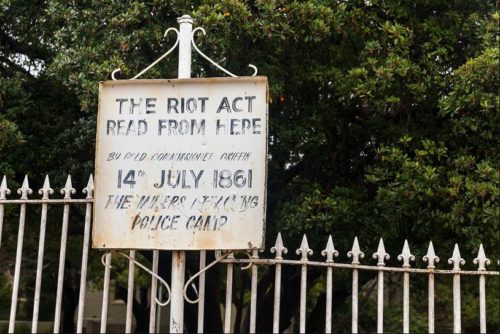 Main street of the since renamed town of ‘Young’
Main street of the since renamed town of ‘Young’
Lambing Flat lies in the Burrangong region (south-west slopes) of NSW. Regrettably Lambing Flat has since been politically renamed ‘Young‘ yet the slopes are completely Aussie.
The civil uprisings are oft misleading termed “riots” by leftie political historians, those misinformed, else those who have not distinguished criminal ‘riot’ from a politically motivated ‘civil uprising’.
Australia’s historical truth, as unsavoury for PC globalists as it may be, saw a series of anti-Chinese demonstrations by White colonial Diggers (gold diggers) that took place during Australia’s Gold Rush Era from the 1850s.

Australia’s Original Diggers
The uprisings took place basically because the colonial English authorities at the time wrongly allowed in vast hordes of illegal Chinese to compete with local Whites and legitimate European immigrants to the riches on the various gold diggings.
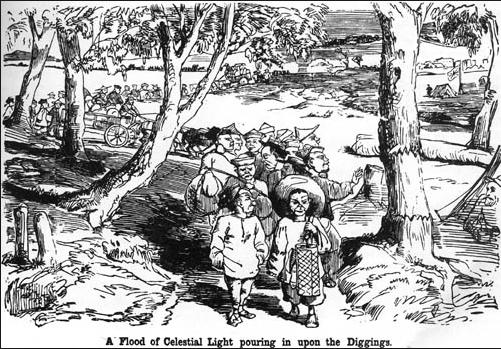
Australia’s first Chinese invasion via the people smuggling route was through the port of Robe from 1854 to avoid immigration tax
The Chinese arrived by boat in the thousands outnumbering the local Whites who in many cases second and third generation ‘Australians’ holding both native birth right and native ancestral rights. (even though the nation was yet to be officially proclaimed).
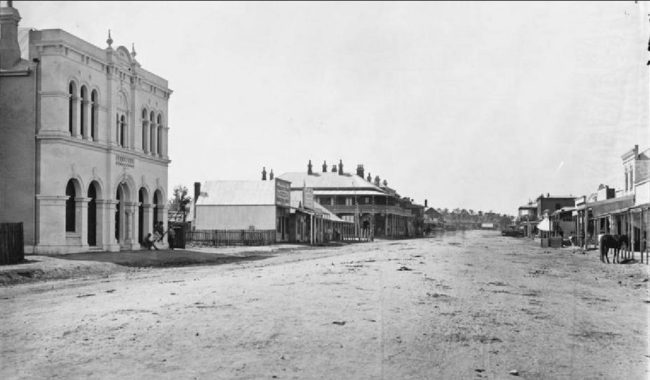 The town of Lambing Flat from the 1880s
The town of Lambing Flat from the 1880s
A traveller in 1854 described one group of Chinese:
“…between six and seven hundred coming overland from Adelaide. They had four wagons carrying their sick, lame and provisions. They were all walking single file, each one with a pole and two baskets. They stretched for over two miles in procession. I was half and hour passing them …everyone behind seemed to be yabbering to his mate in front in a sing-song tone”.
The Chinese were different in appearance, dress, culture and had dodgy haircuts. They were Third World in values and standards, notably well below the First World White society. The Chinese didn’t speak English. They didn’t try to integrate. They took over and they only looked after themselves. They brought diseases, crime and vice. Once they got their gold wealth, the Chinese left Australia and went back to China. It was a drain on the fledgling economy.
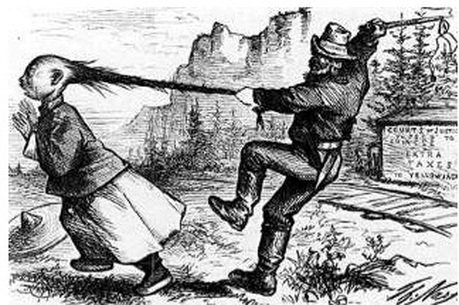
It was no different to today in Australia or elsewhere. Consider the ongoing drug raids in Melbourne and Sydney perpetrated by Chinese organised crime gangs.
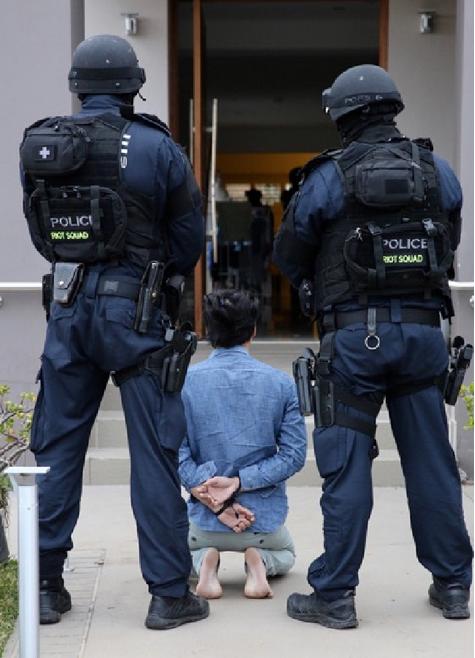
Chinese drug criminal arrested by police Riot Squad in Sydney, June 28 2017
Back in colonial days, the local diggers repeatedly complained to the English colonial authorities but were not listened to.
The first anti-Chinese demonstration occurred on the goldfields at Bendigo in July 1854 and tensions flared into full-on ‘Roll Ups’ at Daylesford and Castlemaine. A massive invasion of Chinese landed at Robe in South Australia to avoid Victoria’s £10 tax per head (some 16,000 ‘celestials‘), then headed illegally overland to the Victorian goldfields. They ripped into the diggings without a permit, discovering a new goldfield at Ararat, but were properly driven off by local diggers. Noted Chinese illegals at Lambing Flat were Ah Geang, Quey, Ah Sing, Sing Chai and a Wong.
Similar events occurred in New South Wales, which was just feeling the impact of significant Chinese invasion. Whites locals drove the Chinese off the diggings at Rocky River in New England in 1856.
These pressures gave rise to several violent protests against government policies across Victoria and New South Wales in the late 1850s and early 1860s. Serious confrontations followed at Adelong in 1857 and Tambaroora in 1858. In Victoria, The Buckland (River) goldfield was the scene of repeated incidents, culminating in a major uprising in July 1857.
Uprisings ensued at gold mines between Chinese and European diggers. So all states legislated against Chinese in 1880.
The Lambing Flat diggings were proclaimed as a goldfield on November 27 1860 and given the name Burrangong after the local creek, but thousands of locals were already there getting stuck in. Some 9000 diggers had setup at what became known as the ‘El Dorado’ of New South Wales colony.
Then 1500 illegal Chinese arrived suddenly to compete and in the minds of the diggers, were “taking their gold“.
Understandably, diggers’ complaints and protests led to demonstrations which then manifest into multiple civil uprisings between 1860–1861 on the at Spring Creek, Stoney Creek, Back Creek, Wombat, Blackguard Gully, Tipperary Gully, and culminating at Lambing Flat.
Over a period of ten months the unrest had built up, yet it was stubbornly ignored by the local English colonial police and authorities.
The first Digger protest ‘roll up‘ to send the illegal ‘celestials’ (aliens) packing, took place on Sunday January 27 1861 (after church) at the Blackguard Gully diggings. It was mild summer evening and was a friendly but firm ousting. Many pony tails were lopped to send a message.
Following ‘roll ups’ in mid-winter were not so obliging.
There were two triggers for the violence: in Sydney the Legislative Council rejected the anti-Chinese bill, and a false rumour swept the goldfield that a new group of 1,500 Chinese were on the road to Burrangong. The diggers logically feared full-scale Chinese invasion.
So it was that in June 1861, the diggers had had a gutful and so rounded up committed vigilantes numbering from 1500 to 2000 strong and evicted 1200 Chinese from Lambing Flat. On the Sunday night of June 30 1861 (after church), the diggers drove the Chinese off the Lambing Flat, and then moved on to the Back Creek diggings, where 150 – 200 Chinese were encamped, they went about destroying tents and looting.
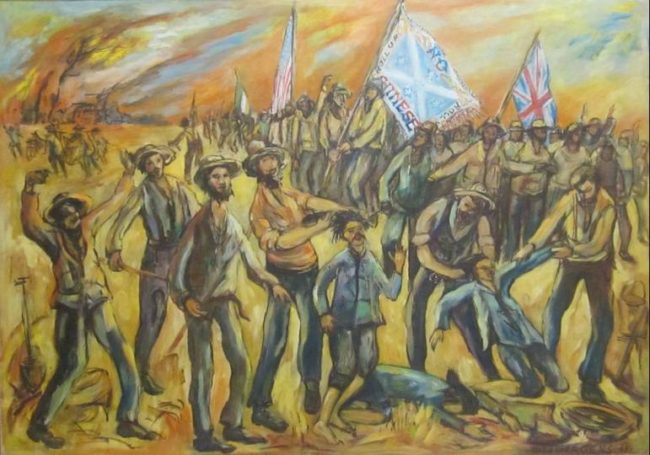
Many of the Chinese took a beating, but no one was killed. It was to send them a strong message that the Chinese were not welcome.
So about 1,000 Chinese abandoned the field and set up camp near pioneer James Roberts‘ homestead at Currawong sheep station, 20 km away. Roberts and his wife Elizabeth harboured and fed the illegals and they are regarded as the colony’s hateful leftist traitors.
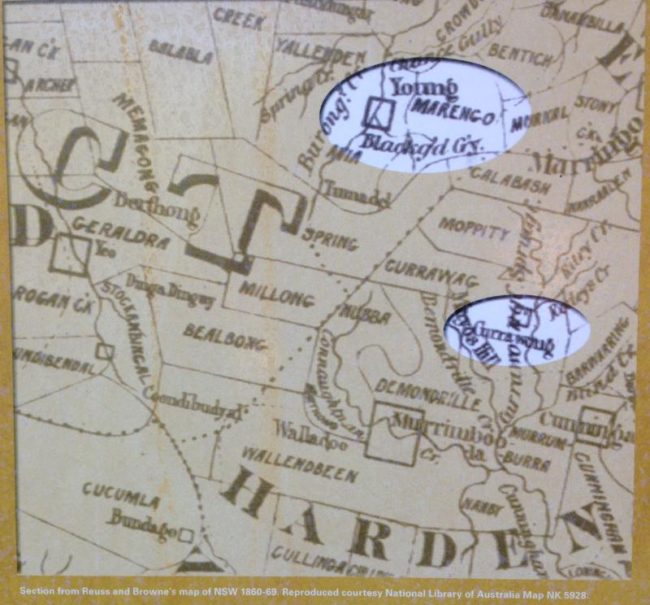
The police arrived in the days that followed, identified the leaders of the riot, and three were arrested two weeks later. The police briefly abandoned the field, but then a detachment of 280 armed troopers, sailors and police reinforcements arrived from Sydney and stayed for a year.
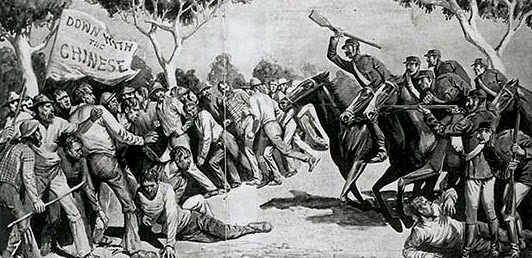 Once the Riot Act was read out, troopers had legal authority to shoot anyone deemed to be a rioter.
Once the Riot Act was read out, troopers had legal authority to shoot anyone deemed to be a rioter.
The Chinese were reinstated on the segregated diggings, the ringleaders of the riots were tried and two were gaoled.
But the Chinese returned, so 1000 diggers staged a second uprising two weeks later on the Sunday night of July 14 (after church). The troopers broke it up using gunfire and mounted sabre charges, wounding many.
One digger by the name of Lapton was killed for being deemed a rioter. His death was not in vain. Digger Lapton’s ultimate sacrifice was in defending diggers in the fledgling colony from mass invasion by illegal aliens. Lapton’s death and the Lambing Flat Uprising instigated the birth of the diggers movement to secure what would evolve into our nation’s culturally defensive White Australia Policy.
The Lambing Flat Banner ‘Roll Up – No Chinese’
The local cause to evict the invading Chinese was galvanised under a protest banner painted on a digger’s tent-flap in 1861.
Designed possibly by wither three digger’s wives or else a well-known tailor of the district, it was painted by a Scottish digger. Being a protest banner it bore the Southern Cross superimposed over the Scottish St. Andrew’s Cross with the inscription, ‘Roll Up – No Chinese‘. It was a mistaken variant of the Eureka Flag of the digger uprising of 1854 at Ballaarat. It has been claimed to be an example of Chartist art – the Chartist movement was not racial in nature and sought only to protect the poor from the rich (greedy).
Nevertheless, along with the Eureka Flag it is a rare example of an historic Australian banner designed to rally support to a cause.
There are many conclusions as to who designed the flag.
Lambing Flat was subsequently renamed Young after some foreign politician to try to wipe local history. It should be renamed back to Lambing Flat and the Australian historical truth taught in Australian classrooms.
Read Lambing Flat Uprising 1861 – The Birth of White Australia
(NB. The author has mistakenly referred to ‘riot’ which holds a criminal intent, so instead read as ‘civil uprising’ which holds political motivation.)
